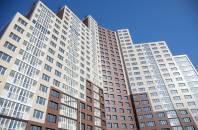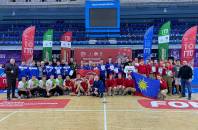|
Региональный журнал для деловых кругов Дальнего Востока
|
|
||||||||||||||||||||||
|
Воскресенье| 26 Октября, 16:41 |
|
|
Тема номера
|
|||||||||||||||||||||

 Олег Кожемяко осуществил новогодние желания маленьких приморцев
В преддверии новогодних праздников заветные желания маленьких приморцев начинают сбываться. Так, Губернатор Приморского края Олег Кожемяко передал подарки от Деда Мороза двум маленьким приморцам: шестилетнему Мирону Глушаку из Тернейского муниципального округа и четырёхлетней Ольге Алимпиевой из Арсеньева.
Олег Кожемяко осуществил новогодние желания маленьких приморцев
В преддверии новогодних праздников заветные желания маленьких приморцев начинают сбываться. Так, Губернатор Приморского края Олег Кожемяко передал подарки от Деда Мороза двум маленьким приморцам: шестилетнему Мирону Глушаку из Тернейского муниципального округа и четырёхлетней Ольге Алимпиевой из Арсеньева.
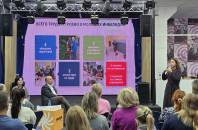 Родители ребят с ОВЗ обсудили вопросы образования и трудоустройства с представителями власти Приморья
Третья встреча клуба "На равных", призванного помогать гражданам решить непростые жизненные ситуации, состоялась в Приморье. В этот день участниками клуба стали родители детей с инвалидностью и ограниченными возможностями здоровья. Они обсудили с представителями власти вопросы образования и трудоустройства таких ребят.
Родители ребят с ОВЗ обсудили вопросы образования и трудоустройства с представителями власти Приморья
Третья встреча клуба "На равных", призванного помогать гражданам решить непростые жизненные ситуации, состоялась в Приморье. В этот день участниками клуба стали родители детей с инвалидностью и ограниченными возможностями здоровья. Они обсудили с представителями власти вопросы образования и трудоустройства таких ребят.
 Социальные предприниматели Приморья могут найти кадры и получить рекламу на радио при господдержке
Открыт прием заявок на две актуальные для социальных предпринимателей меры поддержки: "Размещение двух вакансий на HeadHunter" и "Размещение рекламы на радиостанции". Такой формат господдержки поможет социальному бизнесу Приморья продвигать свои услуги в осенний период и найти профессиональные кадры для расширения штата.
Социальные предприниматели Приморья могут найти кадры и получить рекламу на радио при господдержке
Открыт прием заявок на две актуальные для социальных предпринимателей меры поддержки: "Размещение двух вакансий на HeadHunter" и "Размещение рекламы на радиостанции". Такой формат господдержки поможет социальному бизнесу Приморья продвигать свои услуги в осенний период и найти профессиональные кадры для расширения штата.
 24 протокола составили на нарушителей противопожарного режима в приморских лесах
Лесничие и инспекторы в Приморье составили 24 протокола в отношении нарушителей особого противопожарного режима на землях лесного фонда. ОПР действует в большинстве муниципалитетов и подразумевает крупные штрафы за пренебрежение правилами пожарной безопасности.
24 протокола составили на нарушителей противопожарного режима в приморских лесах
Лесничие и инспекторы в Приморье составили 24 протокола в отношении нарушителей особого противопожарного режима на землях лесного фонда. ОПР действует в большинстве муниципалитетов и подразумевает крупные штрафы за пренебрежение правилами пожарной безопасности.
The Jewish Autonomous Region: From metals to soybeans
Alexander Vinnikov,Governor, Jewish Autonomous Region:
We stand for open cooperation
"The Jewish Autonomous Region has been among the fastest-growing regions in the Russian Federation in recent years. This is made possible by the regional government’s policies, which are designed to encourage local residents to stay in the region permanently, as well as to attract investment, in part by creating favorable conditions for the development of small and medium-sized business and manufacturing, and by a range of social and economic programs and the expanding regional tax base.
The region’s potential as a transit transportation hub and the development of our logistics capabilities are key competitive advantages in the current market environment. Three river crossing points on our border with the People’s Republic of China provide foreign trade opportunities, and cross-border trade is growing. A new cross-border railroad bridge spanning the Amur River near Nizhneleninskoye Village will be an important infrastructural element allowing re-distribution of transportation flows originating from cooperation in the Asia-Pacific Region. Other investment projects currently under way in the region will introduce a new industry - metallurgy - into the region, and help lift regional agriculture, as well as the local lumber and food processing industries to an entirely new, modern level. We are focused on creating large industrial companies capable of supporting a breakthrough in various sectors of the regional economy and are investing in the creation of in essential new infrastructure. We expect “working” investments and developed production facilities to encourage additional capital inflows.
Our Regional Development Strategy through 2020 singles out developing the Jewish Autonomous Region’s international economic relations with Northeast Asian countries as a top priority. Plans for international cooperation include development of the South Khingan Industrial Area and the Kimkan-Sutarsky and Birobidzhan industrial and transportation hubs; the Birofeld Energy Resource Area, which includes the Ushumun brown coal basin; as well as an agricultural belt and other areas of the regional economy.
Per-capita investment in fixed assets in the region last year was RUB 152,000, placing the Jewish Autonomous Region at No. 4 among the regions of the RFE. We are interested in long-term cooperation with domestic and international business partners. Most foreign investment currently comes to the Jewish Autonomous Region from the UK, as well as from China and other emerging markets. We plan to expand our cooperation with Asia-Pacific countries going forward. Our goal is to identify our niche in the global integration process and create conditions for economic development that eliminates barriers to the movement of capital, goods and labor, as well as to the exchange of experience, technology and innovation. We are prepared to cooperate on equal terms and look forward to working together with partners who are open about their goals and intentions".
The refinery will have planned capacity for 17.25 million metric tons of ore per annum and annual output of 3.18 million tons of iron ore concentrate. Construction of the refinery began in 2007 and is scheduled for completion in 2014.
For further processing of the refinery’s output, construction of Far Eastern Smelting Complex is scheduled to begin in 2015. The new facility will be the first metallurgical complex in Russia to use the innovative IТmk3 metallization technology designed over the past decade by Japan’s Cobe Steel.
The Far Eastern Smelting Complex is expected to produce 2.5 million tons of direct reduced iron per annum from the Kimkano-Sutarsky refinery’s concentrate starting in 2018.
The total cost of these projects is estimated at RUB 59.5 billion, including RUB 24.0 billion for construction of the refinery.
There are also plans to start building a railroad bridge across the Amur River to connect Russia with China at the Russian village of Nizhneleninskoye and the Chinese city of Tongjiang. Design work for the bridge is complete, and the project documentation has been reviewed by government regulators. The total project cost is estimated at RUB 7.0 billion, and as much as 20 million tons of cargo are expected to be transported over the new bridge every year.
There are also plans to upgrade the 124-kilometer railroad linking the regional capital, Birobidzhan, with Leninskoye. The project would require the building of various border-crossing infrastructure elements in the immediate vicinity of the new bridge.
Since 2008 in the region’s October District, Hemen-Far East LLC, a company part-owned by foreign investors, has been developing the Poperechny Iron and Manganese Mine at the South Khingan Deposit and building an ore refinery. The mine and refinery are expected to process up to 150,000 metric tons of manganese ore per annum, producing 60,000 metric tons of manganese concentrate. Mining operations are scheduled to commence in 2015. The total cost of the project is estimated at RUB 700 million. Plans call for the creation more than 150 jobs.
In early 2011, major local company Magnezit Group won the contract to develop the Soyuznoye graphite deposit. Investors in the project are planning to launch production of crystalline graphite by 2016 with theoretical capacity of 34,000 metric tons of graphite concentrate per annum. Plans include investment of RUB 2.1 billion in building the production facilities, as well as well as the creation of 229 jobs.
A promising four square-kilometer exploration area, Topolikhinsky zone, has been identified within the deposit. Reserves are estimated at 1.9 million metric tons of graphite schist. The new facility is expected to ship its output to Magnezit’s processing complex in the Chelyabinsk Region, with annual shipments expected to reach 10,000 tons by 2020.
Key avenues for development of the local timber industry include expansion of timber lands available for industrial use and deeper processing of harvested timber.
Projects are under way to build lumber processing facilities in areas of the region adjacent to the Chinese border in the village of Pashkovo (Obluchensky District) and the village of Nizhneleninskoye (Lenin District) to process timber harvested in the Jewish Autonomous Region and neighboring regions. The companies expect to produce parquet floorboards, laminate boards, furniture and other products.
Agriculture is one of the highest-priority sectors for regional economic development. Available feed crops, natural grazing meadows and hay fields create a solid foundation for developing cattle farming in the region. There are also plans to organize large cattle breeding farms, as well as meat and milk-producing family farms.
Soybeans are one of the most common crops grown in the region. The resource base provides a good foundation for setting up modern facilities to produce high-quality soy isolates.
The first stage of the project envisages construction of a 100,000 ton per annum soybean processing facility, with subsequent expansion to 200,000 tpa capacity. Soy for processing would come from the Jewish Autonomous Region, Khabarovsk Region, and Amur Region. The project is expected to cost RUB 1.6 billion, including 0.94 billion in capital expenditures.
- Дальневосточный фокус. Как делать бизнес на Дальнем Востоке?
- Дрейф в штиль. Куда идет дальневосточный бизнес
- Акцент на береговую зону
- "РЖД" берет повышенный план
- Банки сняли отраслевые барьеры малому бизнесу на Дальнем Востоке
- Рейтинг 100 крупнейших компаний Дальнего Востока по выручке и темпам роста показывает реальные дела
- Рецепты выживания: Рейтинг эффективности бизнеса 100 крупнейших компаний Дальнего Востока
- По "Улице Дальнего Востока" с любопытством и восторгом
- Проект "Приморский маршрут": Приморский край: есть чем впечатлиться
- ТОП крупнейших компаний Дальнего Востока расширился до 150
 #ПозывнойКультура: Дед Мороз поздравил участников СВО в госпитале ТОФ с наступающим Новым годом
В преддверии Нового года агитбригада #ПозывнойКультура побывала в госпитале Тихоокеанского флота в субботу, 28 декабря. Для участников СВО, находящихся на лечении и реабилитации, прозвучали музыкальные поздравления. Со словами самых теплых пожеланий подарки военнослужащим вручила заместитель Председателя Правительства Приморского края – министр культуры и архивного дела Елена Бронникова.
#ПозывнойКультура: Дед Мороз поздравил участников СВО в госпитале ТОФ с наступающим Новым годом
В преддверии Нового года агитбригада #ПозывнойКультура побывала в госпитале Тихоокеанского флота в субботу, 28 декабря. Для участников СВО, находящихся на лечении и реабилитации, прозвучали музыкальные поздравления. Со словами самых теплых пожеланий подарки военнослужащим вручила заместитель Председателя Правительства Приморского края – министр культуры и архивного дела Елена Бронникова.
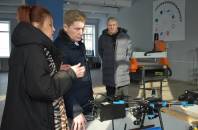 Губернатор Приморья оценил оснащение Индустриального колледжа в Арсеньеве
Очередной день работы Губернатора Приморского края Олега Кожемяко в муниципалитетах региона начался с посещения Приморского индустриального колледжа в Арсеньеве. Глава региона изучил новое оборудование, на котором готовят специалистов технических специальностей.
Губернатор Приморья оценил оснащение Индустриального колледжа в Арсеньеве
Очередной день работы Губернатора Приморского края Олега Кожемяко в муниципалитетах региона начался с посещения Приморского индустриального колледжа в Арсеньеве. Глава региона изучил новое оборудование, на котором готовят специалистов технических специальностей.
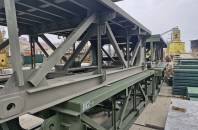 Комплекты быстровозводимых мостов начали поставлять в Приморье
Началась поставка средних автодорожных разборных мостов (САРМ) для проведения аварийно-восстановительных работ на дорогах Приморья. Всего на следующий год закуплено 11 комплектов. При необходимости комплекты САРМ будут использованы для оперативного восстановления проездов во время паводков.
Комплекты быстровозводимых мостов начали поставлять в Приморье
Началась поставка средних автодорожных разборных мостов (САРМ) для проведения аварийно-восстановительных работ на дорогах Приморья. Всего на следующий год закуплено 11 комплектов. При необходимости комплекты САРМ будут использованы для оперативного восстановления проездов во время паводков.
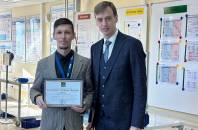 Почти 900 сотрудников предприятий Приморья уже владеют бережливыми технологиями благодаря нацпроекту "Производительность труда"
Итоги реализации национального проекта "Производительность труда" и планы на будущее озвучил министр экономического развития Приморья Андрей Блохин на награждении команды Регионального центра компетенций. За четыре года работы нацпроекта реализовано 78 проектов по внедрению бережливых технологий на предприятиях края.
Почти 900 сотрудников предприятий Приморья уже владеют бережливыми технологиями благодаря нацпроекту "Производительность труда"
Итоги реализации национального проекта "Производительность труда" и планы на будущее озвучил министр экономического развития Приморья Андрей Блохин на награждении команды Регионального центра компетенций. За четыре года работы нацпроекта реализовано 78 проектов по внедрению бережливых технологий на предприятиях края.
